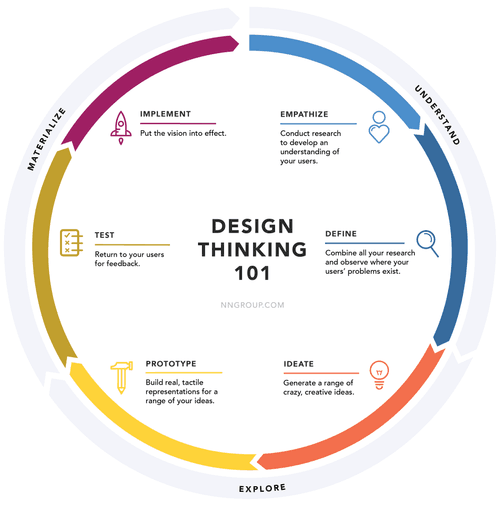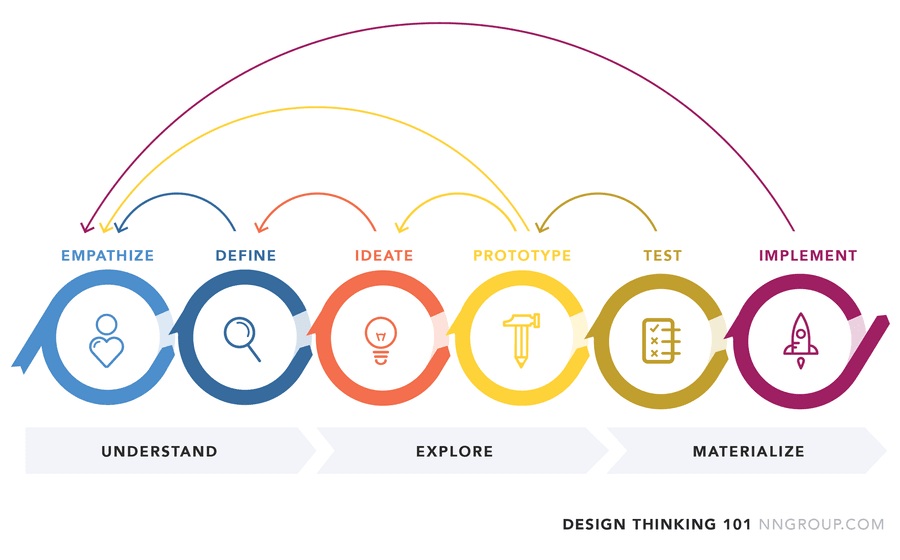Learn more about business with this collection
How to beat procrastination
How to enhance your creative thinking
How to create a smooth transition in a new endeavor
The history of design thinking
Historically, design has been an afterthought in the business world. It applied only to aesthetics and resulted in companies creating solutions that failed to meet their customers' real needs.
Early examples of human-centric design:
- In the early 1900s, Charles and Ray Eames practised "learning by doing", exploring a range of needs and limitations before designing their famous Eames chairs.
- In the 1960s, dressmaker Jean Muir considered how her clothes felt to wear and how they looked to others.
Both developed a deep understanding of their users' lives and unmet needs.
100
631 reads
Design thinking definition
The term "design thinking" was coined in the 1990s by David Kelley and Tim Brown of IDEO, with Roger Martin.
Design thinking is an ideology supported by a process.
- The Design thinking ideology states that a hands-on, user-centric approach to problem-solving will lead to innovation, differentiation, and competitive advantage.
- The design thinking process defines the hands-on, user-centric approach in six distinct phases.
94
588 reads
The design-thinking framework
The overall flow of the framework
- Understand
- Explore
- Materialize
Within the larger framework are 6 phases:
- Empathise: Research what your users do, say, think, and feel.
- Define: Combine your research to identify where your users' problems exist, then highlight opportunities for innovation.
- Ideate: Brainstorm a large range of crazy ideas that address unmet user needs.
- Prototype. Build actual, tactile representations of a subset of your ideas to help find what works and what does not.
- Test: Return to your users for feedback.
- Implement: Your solution should touch the lives of your end-users.
127
481 reads
The advantage of the framework
- The user-centred process starts with user data, creates design artefacts that address real user needs, then test those ideas with real users.
- It leverages collective expertise and establishes a shared language and buy-in from your team.
- It encourages innovation by exploring multiple avenues for the same problem.
94
439 reads
Flexible framework
The design-thinking framework should not be seen as a step-by-step recipe for success. Instead, it should be used as scaffolding to support you. Take the framework and tweak it as needed.
- Each phase should be iterative and cyclical, not linear. Only when the wireframes are prototyped can you get a real representation of your design. Then you can assess if your solution really works.
- Repeat phases: It can be necessary to do an exercise within a phase several times to get to the desired outcome.
100
394 reads
Scalability - think bigger
The nature of design thinking makes it scalable. The guide created can be used regardless of expertise, and mitigate the range of design talent while increasing the probability of success.
Design thinking applies to product design as well as societal, environmental, and economical issues.
95
456 reads
CURATED BY
CURATOR'S NOTE
Historically, design has only been used to touch up a product’s aesthetics. It resulted in solutions that failed to meet customers’ needs. Design-thinking remedies this by approaching products from a human-centric viewpoint.
“
More like this
20 ideas
What is Design Thinking?
ideou.com
6 ideas
What is Product Design? [Beginner’s Guide]
careerfoundry.com
4 ideas
Read & Learn
20x Faster
without
deepstash
with
deepstash
with
deepstash
Access to 200,000+ ideas
—
Access to the mobile app
—
Unlimited idea saving & library
—
—
Unlimited history
—
—
Unlimited listening to ideas
—
—
Downloading & offline access
—
—
Personalized recommendations
—
—
Supercharge your mind with one idea per day
Enter your email and spend 1 minute every day to learn something new.
I agree to receive email updates


